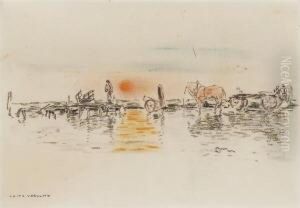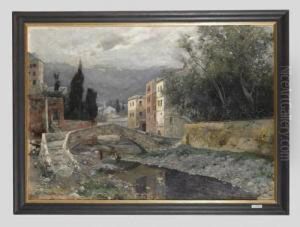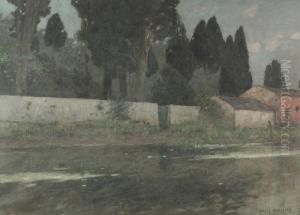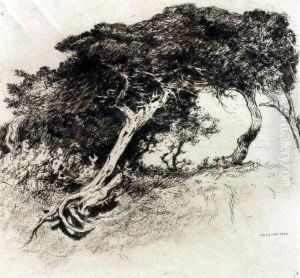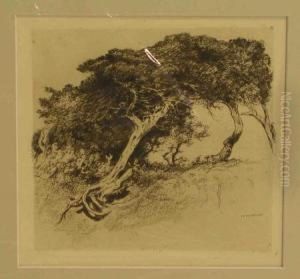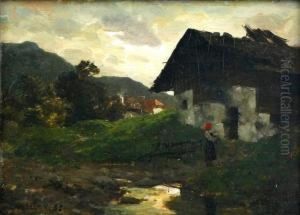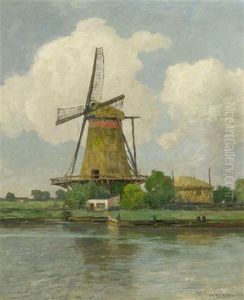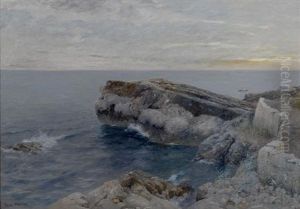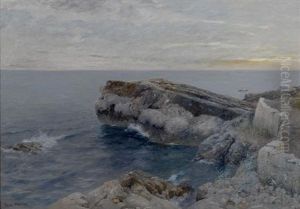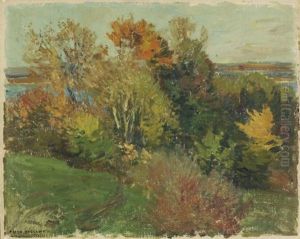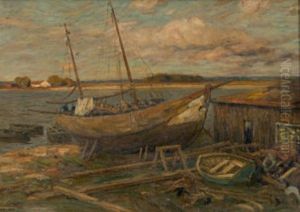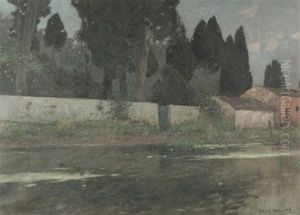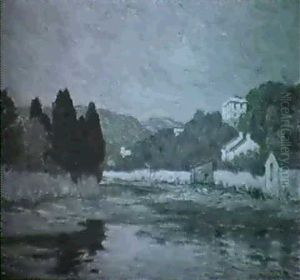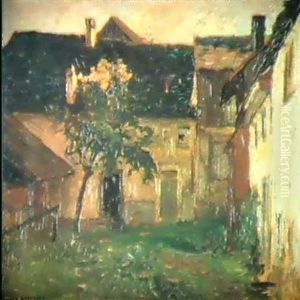Fritz Voellmy Paintings
Fritz Voellmy was a Swiss photographer and painter born in 1906, whose work spanned several decades, capturing the evolution of Swiss visual culture from the early 20th century through the late 20th century. His contributions to both photography and painting have been recognized for their depth, innovation, and the unique perspective he brought to the subjects of his work. Voellmy's career was marked by a keen interest in exploring the boundaries between photography and painting, blending techniques and aesthetics from both disciplines to create works that were ahead of their time.
Voellmy's early years were spent in Basel, Switzerland, where he was exposed to the rich cultural heritage of the city. This early exposure played a crucial role in shaping his artistic vision. He was particularly influenced by the Swiss tradition of precision and attention to detail, which is evident in both his photographic and painted works. Throughout his career, Voellmy exhibited a profound ability to capture the essence of his subjects, whether he was working in black and white photography, color photography, or oil on canvas.
In the 1930s and 1940s, Voellmy established himself as a prominent figure in Swiss art circles, participating in numerous exhibitions and gaining recognition for his innovative approach to art. He was known for his versatility, easily moving between different media and exploring new techniques. His photography often focused on the natural landscapes of Switzerland, urban scenes, and portraits, capturing the changing face of the country and its people during a period of significant social and economic transition.
Voellmy's paintings, on the other hand, were characterized by their vibrant colors and dynamic compositions. He had a particular interest in exploring light and shadow, which added a dramatic quality to his work. His paintings often depicted scenes from everyday life, landscapes, and abstract compositions, reflecting his wide-ranging interests and constant experimentation with form and color.
Despite his considerable achievements, Fritz Voellmy remained a somewhat enigmatic figure in Swiss art history, with his work receiving more attention posthumously. Since his death in 1992, there has been a renewed interest in Voellmy's contributions to both photography and painting. His works are now celebrated for their historical significance and artistic merit, offering insight into the cultural and social landscape of Switzerland in the 20th century. Voellmy's legacy is that of an artist who was constantly evolving, never content to rest on his laurels, and always eager to explore new horizons in the realm of visual art.
